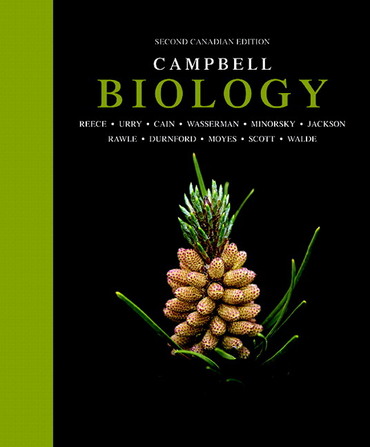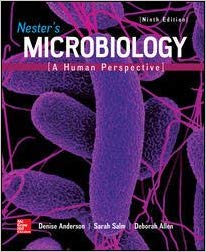Description
Campbell Biology 2nd Canadian Edition Plus Mastering Biology By Jane B. Reece – Test Bank
Campbell Biology, Cdn. Ed., 2e (Reece et al.)
Chapter 1 Introduction: Evolution and Themes of Biology
1) What is a localized group of organisms that belong to the same species called?
A) biosystem
B) community
C) population
D) ecosystem
E) family
Answer: C
Type: MC
Topic: Concept 1.1
Skill: Knowledge/Comprehension
2) Organisms interact with their environments, exchanging matter and energy. For example, what do plant chloroplasts convert the energy of sunlight into?
A) the energy of motion
B) carbon dioxide and water
C) the potential energy of chemical bonds
D) oxygen
E) kinetic energy
Answer: C
Type: MC
Topic: Concept 1.1
Skill: Knowledge/Comprehension
3) What does the main source of energy for producers in an ecosystem come from?
A) solar energy
B) other animals as a food source
C) the atmosphere
D) plants
E) water
Answer: A
Type: MC
Topic: Concept 1.1
Skill: Knowledge/Comprehension
4) Which of the following types of cells utilize deoxyribonucleic acid (DNA) as their genetic material but do not have their DNA encased within a nucleus?
A) animal
B) plant
C) archaea
D) fungi
E) protists
Answer: C
Type: MC
Topic: Concept 1.1
Skill: Application/Analysis
5) To understand the chemical basis of inheritance, we must understand the molecular structure of DNA. This is an example of the application of which concept to the study of biology?
A) evolution
B) emergent properties
C) reductionism
D) the cell theory
E) feedback regulation
Answer: C
Type: MC
Topic: Concept 1.1
Skill: Application/Analysis
6) Once labour begins in childbirth, contractions increase in intensity and frequency until delivery. The increasing labour contractions of childbirth are an example of which type of regulation?
A) a bioinformatic system
B) positive feedback
C) negative feedback
D) feedback inhibition
E) enzymatic catalysis
Answer: B
Type: MC
Topic: Concept 1.1
Skill: Application/Analysis
7) When the body’s blood glucose level rises, the pancreas secretes insulin and, as a result, the blood glucose level declines. When the blood glucose level is low, the pancreas secretes glucagon and, as a result, the blood glucose level rises. What is this regulation of the blood glucose level the result of?
A) catalytic feedback
B) positive feedback
C) negative feedback
D) bioinformatic regulation
E) protein-protein interactions
Answer: C
Type: MC
Topic: Concept 1.1
Skill: Application/Analysis
8) Which branch of biology is concerned with the naming and classifying of organisms?
A) informatics
B) schematic biology
C) taxonomy
D) genomics
E) evolution
Answer: C
Type: MC
Topic: Concept 1.1
Skill: Knowledge/Comprehension
9) Prokaryotes are classified as belonging to two different domains. What are the domains?
A) Bacteria and Eukarya
B) Archaea and Monera
C) Eukarya and Monera
D) Bacteria and Protista
E) Bacteria and Archaea
Answer: E
Type: MC
Topic: Concept 1.1
Skill: Knowledge/Comprehension
10) Global warming, as demonstrated by observations such as melting of glaciers, increasing CO2 levels, and increasing average ambient temperatures, has already had many effects on living organisms. Which of the following might best offer a solution to this problem?
A) Continue to measure these and other parameters of the problem.
B) Increase the abilities of animals to migrate to more suitable habitats.
C) Do nothing; nature will attain its own balance.
D) Limit the burning of fossil fuels and regulate our loss of forested areas.
E) Recycle as much as possible.
Answer: D
Type: MC
Topic: Concept 1.1
Skill: Synthesis/Evaluation
11) A water sample from a hot thermal vent contained a single-celled organism that had a cell wall but lacked a nucleus. What is its most likely classification?
A) Eukarya
B) Archaea
C) Animalia
D) Protista
E) Fungi
Answer: B
Type: MC
Topic: Concept 1.2
Skill: Application/Analysis
12) A filamentous organism has been isolated from decomposing organic matter. This organism has organelles and a cell wall but no chloroplasts. How would you classify this organism?
A) domain Bacteria, kingdom Prokaryota
B) domain Archaea, kingdom Bacteria
C) domain Eukarya, kingdom Plantae
D) domain Eukarya, kingdom Protista
E) domain Eukarya, kingdom Fungi
Answer: E
Type: MC
Topic: Concept 1.2
Skill: Application/Analysis
13) Which of these provides evidence of the common ancestry of all life?
A) ubiquitous use of catalysts by living systems
B) near universality of the genetic code
C) structure of the nucleus
D) structure of cilia
E) structure of chloroplasts
Answer: B
Type: MC
Topic: Concept 1.2
Skill: Application/Analysis
14) Which of the following is (are) true of natural selection?
A) It requires genetic variation.
B) It results in descent with modification.
C) It involves differential reproductive success.
D) It results in descent with modification and involves differential reproductive success.
E) It requires genetic variation, results in descent with modification, and involves differential reproductive success.
Answer: E
Type: MC
Topic: Concept 1.2
Skill: Knowledge/Comprehension





Be the first to review “Campbell Biology 2nd Canadian Edition Plus Mastering Biology By Jane B. Reece – Test Bank”